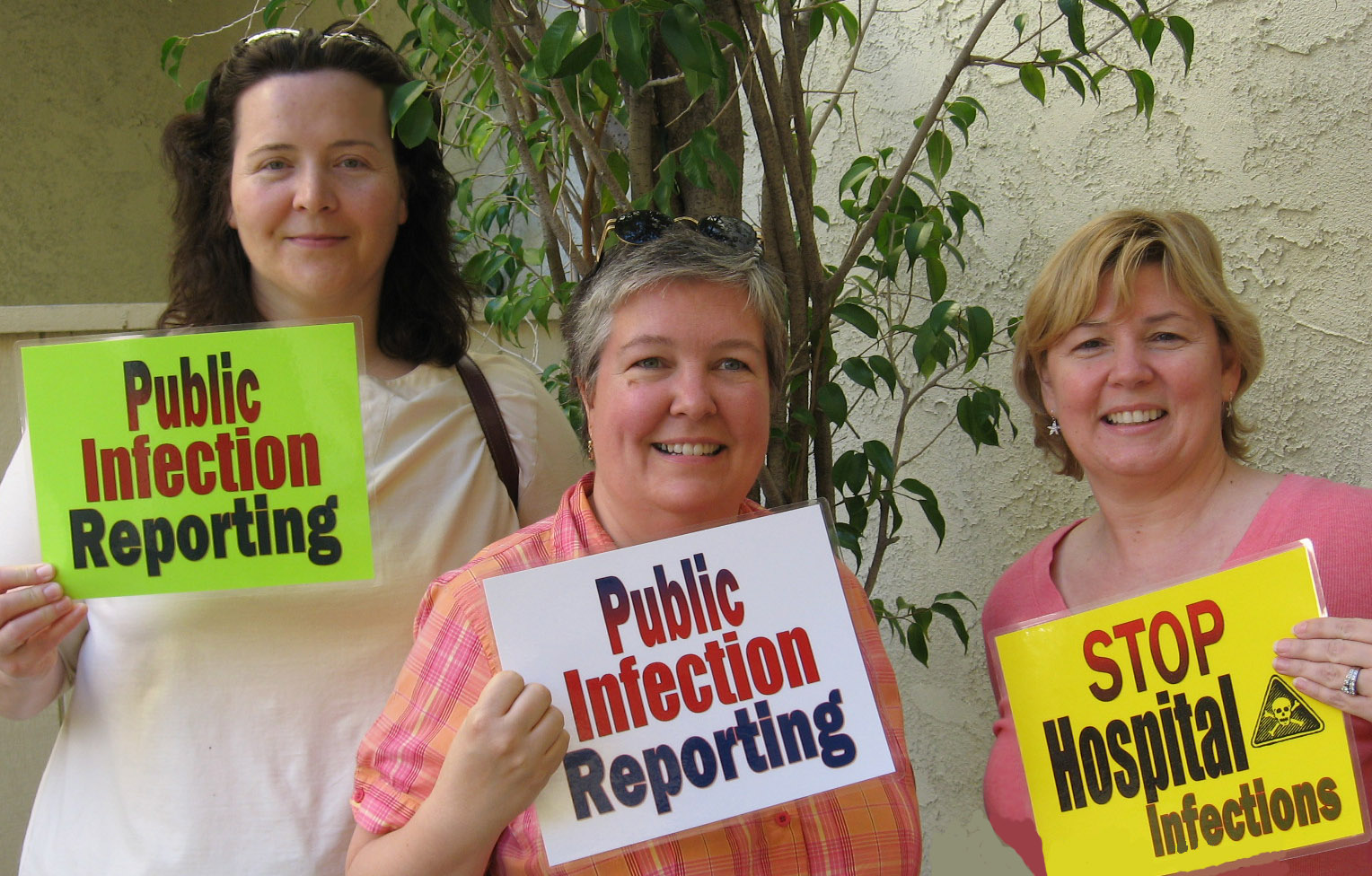Emma Hitt, PhD
March 23, 2010 (Atlanta, Georgia) — Hospital-onset healthcare-facility-associated Clostridium difficile infections (CDI) have increased in incidence and have surpassed methicillin-resistant Staphylococcus aureus (MRSA) infections, according to a new study of a large cohort of patients from community hospitals.
Becky A. Miller, MD, an infectious disease fellow from Duke University in Durham, North Carolina, presented the findings during an oral session here at the Fifth Decennial International Conference on Healthcare-Associated Infections 2010.
"This is the first time this has been described using patient-level data (i.e., with the number of cases as the numerator and the number of patient days as the denominator)," Dr. Miller told Medscape Infectious Diseases.
"We think this trend, particularly in community hospitals, would not have been captured without our large network of 39 hospitals where we perform infection control and surveillance," she said. "We were also unaware that cases of nosocomial C difficile infection had increased and surpassed MRSA."
The researchers performed a prospective cohort study in 28 community hospitals participating in the Duke Infection Control Outreach Network between January 2008 and December 2009.
The cohort consisted of 3,007,457 patient-days. Numerically, nosocomial CDI was the most common healthcare-associated infection (847 cases), followed closely by nosocomial bloodstream infection (838 cases).
Nosocomial infections due to MRSA and intensive care unit device-related infections were approximately equal, at 680 and 681 cases, respectively.
Patients with nosocomial CDI (n = 840) and nosocomial MRSA (n = 655) were equally likely to be male, and to have diabetes or end-stage renal disease requiring hemodialysis. However, patients who developed nosocomial CDI were, on average, older than patients who developed nosocomial MRSA infection (65 vs 59 years; P < .0001). In addition, time to infection was, on average, 8 days for CDI and 7 days for MRSA infection (P < .0001), and overall mortality was higher among patients with MRSA infection than CDI (P < .0001).
The rate of nosocomial CDI was 0.28 cases per 1000 patient-days, whereas the rate of nosocomial MRSA infection was 0.23 cases per 1000 patient-days. Thus, nosocomial CDI occurred 25% more frequently than nosocomial MRSA infection.
Since 2007, rates of healthcare-associated MRSA infection have steadily decreased, whereas rates of CDI have increased, Dr. Miller said during her presentation.
According to Dr. Miller, C difficile spores are shed in stool, and these spores can persist in the hospital environment for months. "These infections are not being prevented by methods that are clearly working to prevent nosocomial infections due to MRSA," she said. She added that "we think that this study represents the tip of the iceberg, as we did not include nosocomial C difficile cases diagnosed after patients leave the hospital."
In another presentation on C difficile, researchers described a targeted strategy to eliminate C difficile using ultragermicidal bleach wipes. Robert Orenstein, DO, from the Mayo Clinic in Rochester, Minnesota, reported the findings here in a poster session.
"The beauty of this project was that implementation was relatively simple — it required putting together a committed team and emphasizing our goal of improving patient outcomes," Dr. Orenstein told Medscape Infectious Diseases.
The researchers targeted 2 units with a focused intervention of daily cleaning of all patient rooms with Clorox brand ultragermicidal bleach wipes containing 6.15% sodium hypochlorite, and cleaning after the patient had been discharged.
Cleaning was assessed by environmental services supervisors, and Clean-Trace technology was used. Patients and environmental services employees who cleaned the rooms responded to a survey regarding satisfaction and tolerance of the cleaning procedure.
Before the intervention was initiated, the incidence of CDI was 18.4 per 10,000 patient-days; after the intervention was initiated, the incidence was 3.76 per 10,000 patient-days, "far exceeding" their goal of a reduction in incidence of 30%, Dr. Orenstein said.
According to the authors, patients tolerated the cleaning well, and although environmental services "employees initially had concerns regarding odor and irritation, these were resolved." The cost of the intervention was estimated at $18,671 per year.
"I am struck by the fact that our highest-risk unit has gone 6 months without a hospital-acquired case attributable to their unit, despite the fact that the overall incidence (i.e., cases admitted with this infection) continues to rise," Dr. Orenstein said. "This suggests what we did really had a great impact," he added. "This is especially gratifying knowing the impact that C difficile disease can have on our patients lives."
"C difficile has been in the news for the last decade," said Carlene A. Muto, MD, medical director for infection control at the University of Pittsburgh School of Medicine in Pennsylvania. "What has taken focus this year is that the environment matters," she said.
According to Dr. Muto, an analysis by their group presented in the late-breaking session described the undetected reservoir in patients who asymptomatically carry C difficile (~6% of the patients tested).
"Many studies have described noncompliance with cleaning patient rooms and how a focused effort can change this behavior," Dr. Muto told Medscape Infectious Disease. "Our group implemented a bleach/detergent cleaning program years ago, but since June 2009, we have used this product on every surface, every time, not just in the rooms of patients known to be positive."
She noted that "patients not known to be colonized/infected one day may be so the next. We did see a decrease in C difficile healthcare-associated infections using this approach."
Neither study was commercially funded. Dr. Miller, Dr. Orenstein, and Dr. Muto have disclosed no relevant financial relationships.
Fifth Decennial International Conference on Healthcare-Associated Infections (ICHAI) 2010: Abstract 386, presented March 20, 2010; Abstract 142, presented March 19, 2010.
Showing posts with label methicillin. Show all posts
Showing posts with label methicillin. Show all posts
Sunday, April 11, 2010
Sunday, March 22, 2009
Children's Staph Infections Increasingly Resistant to Drugs
New York Times
By RONI CARYN RABIN
Published: January 20, 2009
Children are picking up more stubborn staph infections that don’t respond to common antibiotics, and the proportion of ear, nose and throat infections resistant to standard drug treatment increased dramatically over a six-year period, a new study has found.
Methicillin-resistant Staphylococcus aureus infections, known as MRSA, accounted for 28.1 percent of children’s head and neck staph infections in 2006, up from just 11.8 percent in 2001, according to researchers at Emory University in Atlanta. It once was rare for an ear, nose and throat doctor to see MRSA infections, noted Dr. Steven E. Sobol, the paper’s senior author and director of pediatric otolaryngology at Emory University School of Medicine.. “That was the impetus for the study,” he said.
The report was published in this week’s issue of Archives of Otolaryngology - Head and Neck Surgery.
“Over the past four or five years, we’ve seen an increased prevalence of these infections that used to be caused by other organisms that are now being caused by MRSA,” said Dr. Sobol. The researchers excluded from their analysis skin infections not caused by staph.
Though the study captured information from only a limited number of laboratories, the report’s authors said the overall trend is clear, concluding that there is “an alarming nationwide increase” in the prevalence of MRSA infections in children. The change parallels an increase in so-called community-acquired cases of MRSA among relatively healthy people who aren’t hospitalized or infirm.
The scientists analyzed 21,009 head and neck staph infections occurring among children from January 2001 to December 2006. The data came from a national electronic microbiology database that collects strain-specific drug resistance test results from labs affiliated with 300 hospitals around the country. The average age of the patients was 6.7 years old.
The proportion of drug resistant head and neck staph infections increased dramatically over the six-year period, the researchers found. Overall, 21.6 percent, or 4,534 samples, were methicillin-resistant, the greatest proportion of them involving the ear, nose and sinus and pharynx.
Only 11.8 percent of childhood head infections were resistant in 2001, but the figure jumped to 12.5 percent in 2002, 18.1 percent in 2003, and 27.2 percent in 2004.
The rate fell to 25.5 percent in 2005 and rose again to 28.1 percent in 2006, the researchers reported.
Almost 60 percent of the head and neck infections occurred among children who had not been in medical settings beforehand and were seeing doctors as outpatients, the researchers said, suggesting that children were exposed to resistant bacteria in the community.
Op-Ed Columnist
By RONI CARYN RABIN
Published: January 20, 2009
Children are picking up more stubborn staph infections that don’t respond to common antibiotics, and the proportion of ear, nose and throat infections resistant to standard drug treatment increased dramatically over a six-year period, a new study has found.
Methicillin-resistant Staphylococcus aureus infections, known as MRSA, accounted for 28.1 percent of children’s head and neck staph infections in 2006, up from just 11.8 percent in 2001, according to researchers at Emory University in Atlanta. It once was rare for an ear, nose and throat doctor to see MRSA infections, noted Dr. Steven E. Sobol, the paper’s senior author and director of pediatric otolaryngology at Emory University School of Medicine.. “That was the impetus for the study,” he said.
The report was published in this week’s issue of Archives of Otolaryngology - Head and Neck Surgery.
“Over the past four or five years, we’ve seen an increased prevalence of these infections that used to be caused by other organisms that are now being caused by MRSA,” said Dr. Sobol. The researchers excluded from their analysis skin infections not caused by staph.
Though the study captured information from only a limited number of laboratories, the report’s authors said the overall trend is clear, concluding that there is “an alarming nationwide increase” in the prevalence of MRSA infections in children. The change parallels an increase in so-called community-acquired cases of MRSA among relatively healthy people who aren’t hospitalized or infirm.
The scientists analyzed 21,009 head and neck staph infections occurring among children from January 2001 to December 2006. The data came from a national electronic microbiology database that collects strain-specific drug resistance test results from labs affiliated with 300 hospitals around the country. The average age of the patients was 6.7 years old.
The proportion of drug resistant head and neck staph infections increased dramatically over the six-year period, the researchers found. Overall, 21.6 percent, or 4,534 samples, were methicillin-resistant, the greatest proportion of them involving the ear, nose and sinus and pharynx.
Only 11.8 percent of childhood head infections were resistant in 2001, but the figure jumped to 12.5 percent in 2002, 18.1 percent in 2003, and 27.2 percent in 2004.
The rate fell to 25.5 percent in 2005 and rose again to 28.1 percent in 2006, the researchers reported.
Almost 60 percent of the head and neck infections occurred among children who had not been in medical settings beforehand and were seeing doctors as outpatients, the researchers said, suggesting that children were exposed to resistant bacteria in the community.
Op-Ed Columnist
Subscribe to:
Posts (Atom)







